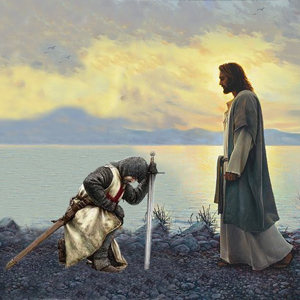THE RETURN OF THE NIGHTS TEMPLAR TO PORTUGAL
The Nights Templar are in the Bible
Luke 10:29-37
But he, willing to justify himself, said unto Jesus, And who is my neighbour?
And Jesus answering said, A certain man went down from Jerusalem to Jericho, and fell among thieves, which stripped him of his raiment, and wounded him, and departed, leaving him half dead.
And by chance there came down a certain priest that way: and when he saw him, he passed by on the other side.
And likewise a Levite, when he was at the place, came and looked on him, and passed by on the other side.
But a certain Samaritan, as he journeyed, came where he was: and when he saw him, he had compassion on him,
And went to him, and bound up his wounds, pouring in oil and wine, and set him on his own beast, and brought him to an inn, and took care of him.
And on the morrow when he departed, he took out two pence, and gave them to the host, and said unto him, Take care of him; and whatsoever thou spendest more, when I come again, I will repay thee.
Which now of these three, thinkest thou, was neighbour unto him that fell among the thieves?
And he said, He that shewed mercy on him. Then said Jesus unto him, Go, and do thou likewise.
Origins of the Templars
The Templars officially originated in the Latin Kingdom of Jerusalem in 1118 A.D., when nine knights, , vowed to protect pilgrims on the dangerous roads leading to Jerusalem. These courageous knights gained the favor of King Baldwin II of Jerusalem who granted them part of his palace for their headquarters, which was located in the southeastern part of the Temple Mount, called "Solomon's Temple". Encouraged by King Baldwin II and Warmund of Picquigny, Patriarch of Jerusalem, they were generally seen as complementary to the Hospitallers (recognized as an Order of the Church by the papacy in 1113, but not militarized until the 1130s), who cared for sick and weary pilgrims in their convent in Jerusalem.
The Templars' services were welcomed and greatly appreciated. But it is important to realize that at this early juncture when they were based at the Temple Mount area, the Templars were not yet an official monastic Order - the protagonists were seculars imbued with a desire to fulfil the biblical injunction to love thy neighbour, but they were not yet a monastic Order. During the first nine years of the Order (1119-28), contrary to assumptions often made today, the Templars would not have been wearing their trademark white mantles, as they began wearing them after the church Council of Troyes in 1129 when they were given a religious Rule and a white mantle. The famous Red Cross on their mantle was added later when Pope Eugenius III (1145-53) allowed them to wear it as a symbol of Christian martyrdom.
With only nine knights , scholars acknowledge that it seems as though no major efforts were made to recruit any new members until around 1128, when most of the original knights had returned to France and the Council of Troyes began (Jan. 1129) and they became officially recognized by the papacy. By the 1170s, there were about 300 knights based in the Kingdom of Jerusalem itself and more in other areas, and by the 1180s, there were at least 600 knights in Jerusalem alone. After 1129, the Order grew exponentially with many thousands of knights and it then became increasingly powerful.


NOW IS TIME TO MOVE